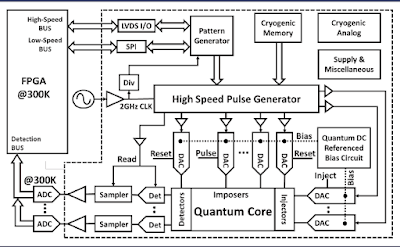Quantum cryptography makes use of unique quantum characteristics of nature to complete a cryptographic job.
Most quantum cryptography algorithms are information theoretically safe (at least in theory), which is a very strong concept of security since it is derived only from information theory.
Early attempts to utilize quantum characteristics for security reasons may be traced back to the 1970s, when Wiesner attempted to produce unfalsifiable bank notes.
However, these concepts seemed to be impractical, since they required the storage of a single polarized photon for days without loss (at the time, photon polarization was the only conceived carrier of quantum information).
Bennett and Brassard made the breakthrough in 1983, when they discovered that photons are better utilized to convey quantum information rather than to store it.
- They might, for example, be used to convey a random secret key from a sender to a recipient, who would then be able to encrypt and decode sensitive communications using the key.
- Bennett and Brassard released the first quantum key distribution (QKD) protocol, dubbed the BB84 protocol, shortly after.
A QKD protocol allows two parties to create a shared secret key using an unsecured quantum channel and a public classical channel that has been authenticated.
- Since then, a slew of new protocols have been suggested – and implemented – propelling QKD to the forefront of quantum cryptography and one of the most important applications of quantum information science.
- Furthermore, driven by growing concerns about data security and the possibility of commercialization, quantum cryptography research has drawn the interest of a number of businesses, private organizations, and governments.
In reality, quantum cryptography solutions are being offered by an increasing number of businesses and startups across the globe.
- In the long run, scientists want to build large-scale quantum networks that will allow safe communication between any subset of users in the network due to quantum entanglement.
- In a wider sense, similar networks may be connected together to form a quantum internet, which could be used for much more than secure communication, such as safe access to distant quantum computers.
Quantum cryptography elegantly integrates concepts and contributions from a variety of disciplines, including quantum information and quantum communication, as well as computer science and conventional encryption.
- The interaction of these disparate disciplines leads to theoretical breakthroughs that are of wide interest and transferable to other areas of study.
- However, since quantum cryptography, and in particular QKD, has a considerable economic appeal, ongoing research is also driven by more practical goals.
For example, combined theoretical and practical efforts are continuously dedicated to: improving the key-generation rates, simplifying the experimental setups, and so on by focusing on an unique QKD protocol that has lately garnered a lot of attention from the scientific community and is widely regarded as the new standard for long-distance QKD in fiber.
Twinfield (TF) QKD is a technique that enables two parties to create a secret key across vast distances using single-photon interferometric measurements in an intermediary relay.
- In this context, we use current theoretical findings and simulations to examine practical TF-QKD implementations in depth.
- With bipartite QKD connections becoming the norm at many research institutions and field deployments across the globe, the next major step would be to join these isolated links into quantum networks to conduct more complex multi-user activities.
- The extension of QKD to many users using multipartite QKD, also known as quantum conference key agreement (CKA), is undoubtedly a logical application of future quantum networks.
When a confidential communication has to be securely broadcast among a group of users, the CKA protocol is used.
- The users share a shared secret key—the conference key—with which they may encrypt and decode the secret message when they utilize the CKA protocol.
In this section, CKA plays a significant part.
- We provide an understandable description of CKA's evolution from current QKD protocols to expose the reader to it.
- We extend QKD's security architecture to incorporate CKA and concentrate on a multipartite variant of the widely used BB84 protocol.
- We also go through some of the most recent experimental implementations of CKA protocols, with a focus on the multipartite BB84 protocol.
- We describe a new CKA technique based on the TF-QKD operating principle, in which several users distil a conference key via single-photon interference events.
- We demonstrate that the protocol outperforms prior CKA schemes over long distances thanks to this feature, since it uses a W-class state as its entanglement resource instead of the traditional GHZ state.
~ Jai Krishna Ponnappan
You may also want to read more about Quantum Computing here.
























